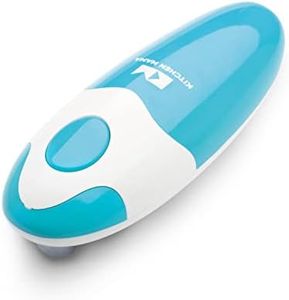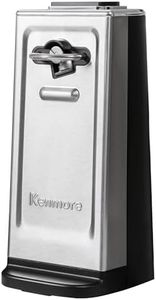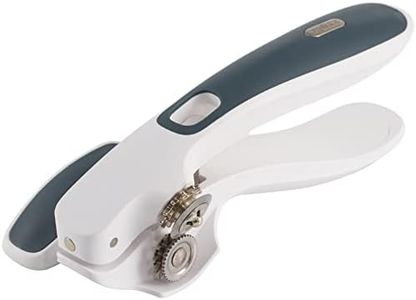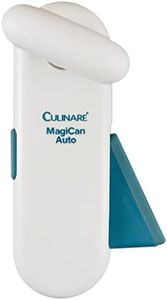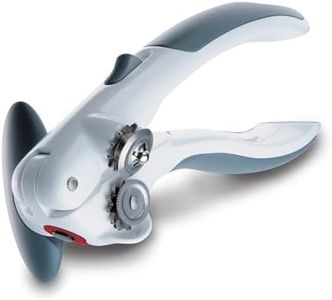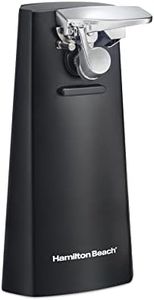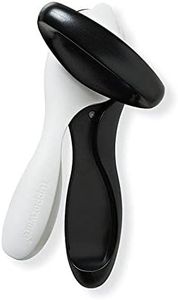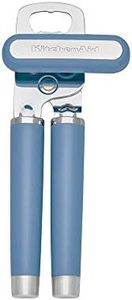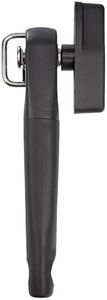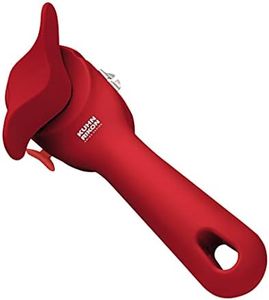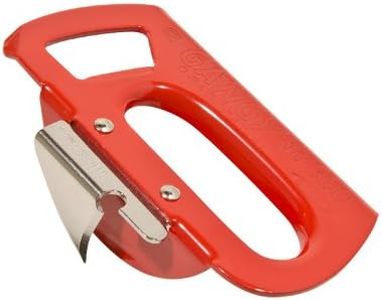We Use CookiesWe use cookies to enhance the security, performance,
functionality and for analytical and promotional activities. By continuing to browse this site you
are agreeing to our privacy policy
10 Best Can Openers
From leading brands and best sellers available on the web.Buying Guide for the Best Can Openers
Choosing the right can opener can make food prep much easier and safer. There are various types and features available, from simple manual varieties to more advanced electric models. Your choice should depend on how often you use a can opener, any physical limitations you might have, and the types of cans you usually open. Understanding what features matter most helps you find a can opener that's comfortable, reliable, and suited to your kitchen routine.Type (Manual vs. Electric)This refers to how the can opener operates: either using your own hand strength and coordination (manual) or electricity (electric). Manual can openers are usually compact and straightforward and are great if you only open cans occasionally or need a portable option. Electric can openers, on the other hand, do most of the work for you with the push of a button, which is ideal for those with limited hand strength or arthritis, or when opening many cans at once. Think about how often and easily you expect to use the opener to decide which type fits your needs best.
Grip ComfortGrip comfort refers to how easy and pleasant the handles of the can opener are to hold and control. Some have cushioned, ergonomic handles designed for an easy grip, while simpler models may be harder or less comfortable to hold. If you have small hands, arthritis, or just want a softer touch, look for thicker, rubber-coated handles. If grip comfort isn't a concern, even basic handles can do the job.
Cutting Mechanism (Side-cut vs. Top-cut)The cutting mechanism is how the can opener removes the lid – from the top (traditional) or the side (smooth edge or safety type). Top-cut openers cut along the can’s top edge and sometimes leave sharp edges. Side-cut openers cut under the rim, producing a smoother edge and often leaving the lid safer to touch. If you worry about sharp edges or want to avoid the lid dropping into the food, consider a side-cut model. For those more interested in speed or tradition, a top-cut type may suffice.
Ease of CleaningEase of cleaning refers to how simple it is to wash the can opener after use. Some can openers have removable cutting wheels or parts that can be placed in the dishwasher, while others need to be wiped by hand. If you open sticky or messy cans, or just want to make clean-up simpler, look for models labeled as dishwasher safe or with removable blades. If you don’t mind a little extra washing, this may not be as important for you.
Size and StorageSize and storage refer to how much space the can opener takes up and how easily you can put it away. Manual openers are typically small and fit in a drawer, making them good for minimal kitchens or portable use. Electric openers may require more counter or cabinet space. Consider where you plan to store your can opener, and if you value portability or compactness, a slim manual opener may be the best choice.
Build Quality and DurabilityBuild quality and durability are about how well the can opener is made and how long it will last. Can openers with stainless steel blades and solid construction tend to hold up better over time and stay sharper, cutting cans more easily. If you use a can opener often, look for those made with durable materials for longevity. For very occasional use, even lighter-duty models can still meet your needs.
